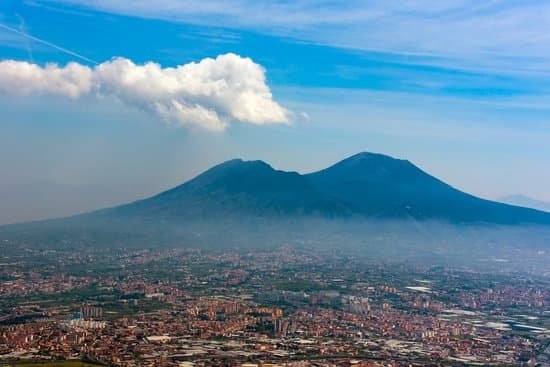Are you gearing up for a trip to Italy and wondering, “What do I need to know before travelling to Italy?” Look no further. Italy is a country that draws in millions of visitors each year, and it’s no surprise why. With its rich history, stunning architecture, delicious food, and vibrant culture, Italy is a must-visit destination for travelers from around the world.
From the iconic Colosseum in Rome to the romantic canals of Venice, Italy offers an allure and charm unlike anywhere else. Whether you’re a history buff, a foodie, or simply looking to immerse yourself in a new culture, Italy has something for everyone. The country’s diverse landscapes and unique regions provide endless opportunities for exploration and discovery.
In this article, we’ll cover everything you need to know before traveling to Italy – from visa and passport requirements to cultural etiquette and customs. We’ll also delve into transportation options, safety tips, ideal times to visit, essential Italian phrases, and must-visit destinations. So sit back, relax, and get ready to embark on an unforgettable journey through the beauty of Italy.
Visa and Passport Requirements
When planning a trip to Italy, one of the first things to consider is the visa and passport requirements. Depending on your nationality, you may need a visa to enter Italy for tourism, business, or other purposes. It’s essential to research the specific requirements based on your country of citizenship well in advance of your travel dates. Additionally, ensure that your passport is valid for at least six months beyond your planned departure date from Italy.
Visa Requirements
The visa requirements for Italy vary depending on your nationality and the purpose of your visit. Citizens of certain countries may be exempt from needing a visa for short stays in Italy, while others will need to apply for a Schengen visa. It’s important to check the official website of the Italian consulate or embassy in your country to determine whether you need a visa for your trip.
Passport Requirements
When traveling to Italy, it’s crucial to have a valid passport that meets certain criteria. Your passport should have at least two blank pages for entry and exit stamps, and it must be valid for at least three months beyond your planned stay in Italy. If you are a citizen of a European Union member state, you may be able to enter Italy with just a national identity card instead of a passport.
Before finalizing your travel plans, make sure to double-check the latest visa and passport requirements for Italy, as regulations can change from time to time based on international agreements and security measures. Consulting with an authorized immigration or travel agency can also provide valuable assistance regarding these requirements.
Best Time to Visit Italy
Italy is a country with diverse climate and landscapes, making it a year-round destination for travelers. However, there are certain times of the year that are more ideal for visiting based on weather, tourist crowds, and special events. Here are some tips for determining the best time to visit Italy:
- Spring (April to June): This is considered one of the best times to visit Italy due to the mild weather, blooming flowers, and fewer tourists compared to the summer months. It’s an ideal time for outdoor activities like sightseeing and enjoying local festivals.
- Summer (July to August): The peak tourist season in Italy, particularly in popular cities like Rome, Florence, and Venice. While the weather is hot and sunny, expect large crowds and higher prices for accommodations and attractions. It’s a great time for beach vacations along the Italian coast.
- Fall (September to October): Another favorable time to visit Italy when the summer crowds have tapered off but the weather remains pleasant. Fall is also harvest season in Italy, offering opportunities to experience wine tastings and truffle hunting.
When planning your trip to Italy, it’s important to consider not only the weather but also any special events or holidays that may impact your travel experience. For example, popular events like Carnevale in Venice or Easter celebrations can attract large crowds and affect hotel availability. Additionally, many Italians take their annual vacation in August so some small businesses and restaurants may be closed during this time.
Ultimately, the best time to visit Italy depends on your preferences for weather, cultural experiences, and tolerance for crowds. Whether you choose to embrace the energy of peak season or enjoy a quieter visit during off-peak times, Italy offers something special throughout the year. What do I need to know before travelling to Italy? Consider these factors when deciding on the best time for your Italian adventure.
Essential Italian Phrases
Before traveling to Italy, it’s important to have a basic understanding of the Italian language. While many Italians speak English, especially in tourist areas, knowing some essential phrases can go a long way in enhancing your experience and making meaningful connections with locals. Here are some key Italian phrases and expressions to help you navigate your trip:
- Ciao (chow) – Hello/Hi
- Grazie (grah-tsee-eh) – Thank you
- Per favore (pair fah-vor-ray) – Please
- Scusi (skoo-zee) – Excuse me
- Dov’è il bagno? (doh-veh eel bahn-yoh) – Where is the bathroom?
- Quanto costa? (kwahn-toh koh-stah) – How much does it cost?
- Posso avere il conto? (pohs-so ah-veh-ray eel kohn-toh) – Can I have the bill?
Learning these phrases not only shows respect for the local culture but also helps in practical situations such as ordering food at a restaurant or asking for directions. Italians appreciate when visitors make an effort to communicate in their language, so don’t be afraid to practice these phrases during your trip.
Additionally, understanding basic Italian will enhance your overall travel experience and allow you to immerse yourself more fully in the rich culture and customs of Italy. Whether it’s engaging in friendly conversations with locals or appreciating Italian art and history, knowing essential phrases will undoubtedly enrich your journey. So, before packing your bags for Italy, take some time to learn these fundamental expressions – it will surely enhance your travel experience.
Cultural Etiquette and Customs
When traveling to Italy, it is important to familiarize yourself with the cultural etiquette and customs of the country. Understanding and respecting the local customs will not only enhance your travel experience, but also show courtesy to the people of Italy. One of the first things to remember is that Italians are known for their warmth and friendliness, so it is always appreciated to greet others with a smile and a friendly “buongiorno” or “buonasera” (good morning/afternoon/evening).
Dining etiquette in Italy is another important aspect to consider. When eating out, it is customary to wait to be seated by the host at a restaurant. Additionally, it is considered rude to ask for substitutions or modifications to your meal, as Italian cuisine is deeply rooted in tradition. When finished with a meal, it is common practice to linger over coffee and conversation rather than rushing off immediately.
Visiting religious sites in Italy also requires adherence to certain customs. Modest attire should be worn when visiting churches or other religious landmarks out of respect. It is also important to note that taking photos may be prohibited in certain areas, so it’s best to observe and follow the rules set by each individual site.
Overall, embracing these cultural etiquettes and customs will not only help you navigate your travels smoothly but also leave a positive impression on the locals you encounter during your trip to Italy.
| Italian Custom | Description |
|---|---|
| Greeting Locals | Italians appreciate warm greetings such as “buongiorno” or “buonasera” |
| Dining Etiquette | Avoid asking for meal modifications and enjoy lingering over coffee after meals |
| Visiting Religious Sites | Dress modestly and adhere to specific rules within religious landmarks |
Transportation and Getting Around
When traveling to Italy, it’s important to know the various transportation options available for getting around the country. Italy has a well-developed and efficient transportation system, making it relatively easy for visitors to explore different cities and regions.
The most popular mode of transportation in Italy is by train, with an extensive network that connects major cities and smaller towns. Travelers can also opt to use buses, which are a convenient and affordable way to reach destinations not covered by the train system.
Another option for getting around Italy is by renting a car. This provides more flexibility and freedom to visit off-the-beaten-path locations at your own pace. However, it’s essential to be aware of the traffic rules and driving etiquette in Italy, as road conditions and driving styles may differ from what you’re used to.
For navigating within cities, public transportation such as buses and trams are readily available. Many cities also have bike-sharing programs, offering a fun and eco-friendly way to explore urban areas. It’s important to familiarize yourself with the public transportation system in each city you visit, including ticketing options and schedules.
Overall, understanding the different transportation options in Italy will enhance your travel experience and allow you to make the most of your time in this beautiful country. Whether you prefer the convenience of trains and buses or the freedom of driving yourself, there are plenty of ways to get around and discover all that Italy has to offer.
Safety and Health Tips
Italy is a magnificent and enchanting destination that offers visitors a rich cultural experience, delectable cuisine, and stunning sights. However, before embarking on a trip to this beautiful country, it is important to be aware of certain safety and health tips to ensure a smooth and enjoyable journey.
Staying Safe in Italy
When traveling to Italy, it is important to be mindful of your surroundings and belongings, especially in popular tourist areas where pickpocketing can occur. Keep valuables secure and be cautious when using public transportation or visiting crowded attractions. It is also advisable to stay informed about any travel advisories and local safety concerns.
Health Precautions
Before traveling to Italy, it is essential to consult with a healthcare professional or visit a travel clinic to receive recommended vaccinations and medical advice. Additionally, it’s crucial to have travel insurance that covers healthcare expenses in case of illness or injury while abroad. It’s also wise to carry essential medications and prescriptions with you during your trip.
Emergency Services
Familiarize yourself with emergency contact information for the local authorities, hospitals, and other necessary services in Italy. Knowing how to access help in the event of an emergency can provide peace of mind during your travels. Additionally, it’s a good idea to have copies of important documents such as your passport and travel insurance policy stored securely in case they are needed.
Must-Visit Destinations and Attractions
Italy is a country rich in history, art, and culture, making it a must-visit destination for travelers from around the world. When planning a trip to Italy, there are several key destinations and attractions that should not be missed. From the iconic city of Rome with its ancient ruins and magnificent architecture to the romantic canals of Venice and the stunning coastline of the Amalfi Coast, Italy offers an array of experiences for every type of traveler.
One of the most famous tourist attractions in Italy is the Colosseum in Rome, an ancient amphitheater that once hosted gladiator battles and other public spectacles. Visitors can explore this iconic landmark and learn about its fascinating history through guided tours or audio guides. Additionally, the Vatican City, with its renowned St. Peter’s Basilica and the Sistine Chapel painted by Michelangelo, is a significant religious and cultural site that should be on every traveler’s itinerary.
For those seeking natural beauty, the Amalfi Coast is a breathtaking coastal region known for its colorful cliffside towns, crystal-clear waters, and scenic hiking trails. The cities of Florence and Milan also beckon travelers with their world-class art galleries, stunning cathedrals, and vibrant fashion scenes. Whether exploring historic sites or enjoying Italy’s natural wonders, there is no shortage of must-visit destinations throughout the country.
As you plan your trip to Italy, consider adding these iconic destinations to your itinerary to experience the diverse beauty and rich cultural heritage that this enchanting country has to offer”.
Conclusion
In conclusion, Italy is a country that offers a perfect blend of history, culture, and natural beauty, making it a must-visit destination for travelers from all over the world. Whether you are drawn to the ancient ruins of Rome, the beautiful canals of Venice, or the picturesque landscapes of Tuscany, Italy has something to offer for every type of traveler. From its delicious cuisine to its stunning architecture and vibrant cities, Italy truly has it all.
Before traveling to Italy, there are several important things to consider. First and foremost, understanding the visa and passport requirements for your specific nationality is crucial. Additionally, familiarizing yourself with Italian cultural etiquette and customs will help ensure a positive and respectful interaction with locals. Knowing some basic Italian phrases can also go a long way in navigating through the country and communicating effectively.
Ultimately, visiting Italy is an opportunity to embrace a unique and enriching experience that will create lasting memories. By taking the time to plan ahead and understand what the country has to offer, travelers can make the most of their time in Italy. With its timeless beauty and rich history, Italy is sure to captivate and inspire anyone who has the privilege of visiting this remarkable destination.
Frequently Asked Questions
What I Wish I Knew Before Traveling to Italy?
Before traveling to Italy, I wish I knew more about the regional differences in cuisine and culture. Italy is known for its diverse regions, each with its own unique traditions and flavors. It would have been helpful to research this beforehand to fully appreciate the country’s rich diversity.
What Do I Need Before Going to Italy?
Before going to Italy, it’s important to have a valid passport and any necessary visas for your trip. Additionally, it’s essential to have travel insurance, especially for healthcare coverage. Researching local customs and language basics can also be very helpful in making the trip more enjoyable and respectful.
What Do Americans Need to Enter Italy?
Americans need a valid passport to enter Italy for stays of up to 90 days within a 180-day period. No visa is required for short tourist or business trips. However, travelers should also make sure their passport has at least six months of validity beyond their planned date of departure from the Schengen area.

I’m a passionate traveler, writer, and Italophile. My fascination with Italy’s history, art, and culture has led me on countless adventures across the Italian landscape. Through “I Live Italy,” I share my love for this extraordinary country and aims to inspire others to explore its boundless beauty.





